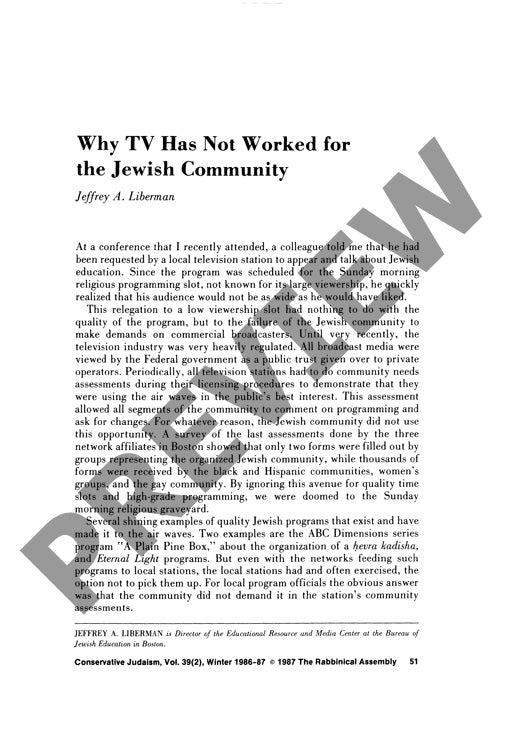Why Tv Has Not Worked for the Jewish Com
Couldn't load pickup availability
Despite widespread access to television broadcasting, Jewish communities have remained notably absent from American television programming - a void stemming not from systemic discrimination but from decades of limited community engagement with media opportunities. Federal broadcasting records and community assessment data from Boston network affiliates reveal stark disparities in regulatory participation, with Jewish organizations submitting only two proposals compared to thousands from other minority groups. Through analysis of FCC licensing procedures, local programming initiatives, and cable television implementation during 1980s deregulation, this research identifies how this lack of engagement relegated Jewish content to low-viewership time slots. Case studies demonstrate that even cable television's promise of narrowcasting remains largely unrealized due to minimal community initiative rather than external barriers. The research presents two viable production models - a $100 educational video on Talmudic principles and a $950 children's program - illustrating accessible pathways for meaningful content creation. Success in Jewish television programming ultimately depends on proactive engagement with regulatory processes and collaborative consortium approaches to overcome resource constraints, transforming existing technological access into effective community representation through coordinated advocacy and programming initiatives.

More Information
-
Physical Description
-
Publication Information
Published 1986-1987
ISBN
-
Publication Credits
Jeffrey Liberman

